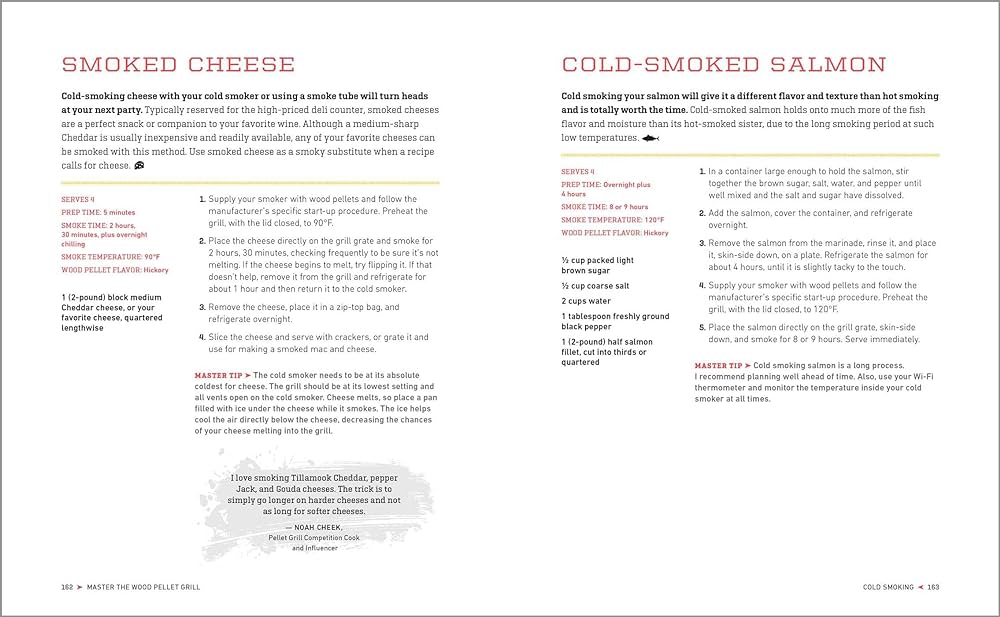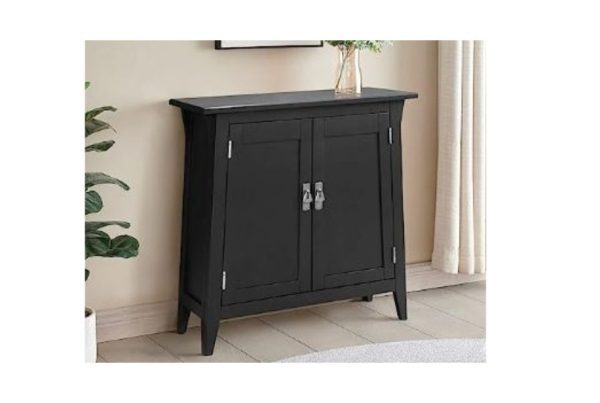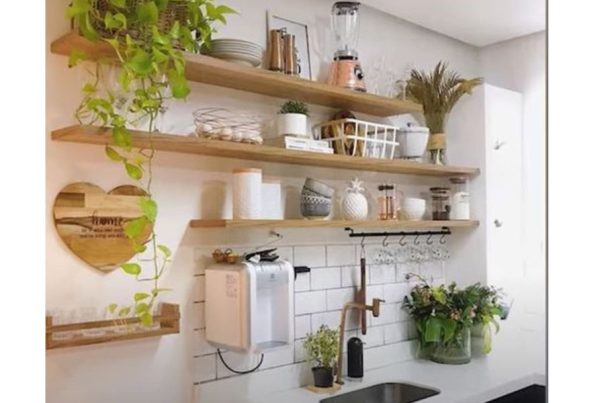To cook succulent oven-cooked salmon, follow these Secrets To Succulent Oven Cooked Salmon: precise timing and proper seasoning. Achieve perfectly cooked salmon every time.
Salmon is a versatile fish with a buttery and rich flavor. Whether you’re a seafood lover or looking to incorporate more healthy proteins into your diet, oven-cooked salmon is a simple and delicious option. When cooked just right, salmon is tender, juicy, and bursting with flavor.
However, achieving that perfect result can sometimes be a challenge. We will explore the secrets to succulent oven-cooked salmon. By learning the precise timing and proper seasoning techniques, you can ensure that your salmon turns out moist, flavorful, and perfectly cooked every time. So, let’s dive in and discover how to elevate your salmon cooking game to a new level.

Credit: zendine.medium.com
Choosing The Right Salmon
When it comes to succulent oven-cooked salmon, choosing the right salmon is crucial. The quality and freshness of the fish can greatly impact the final dish. In this section, we will explore the factors to consider when selecting salmon for your oven-cooked masterpiece.
Freshness Matters
Selecting fresh salmon ensures the best flavor and texture for your oven-cooked dish. Here are some tips to determine the freshness of salmon:
- Look for bright, clear eyes that are not sunken or cloudy.
- Check the skin for a vibrant and metallic sheen, a healthy indicator of freshness.
- Press the flesh to check for firmness. Fresh salmon should bounce back when gently pressed.
- Avoid salmon with strong fishy odors; fresh salmon should have a subtle, briny scent.
Wild Vs. Farmed
Understanding the difference between wild and farmed salmon can help you make an informed decision:
| Wild Salmon | Farmed Salmon |
|---|---|
| Caught in natural habitats, known for their distinct and rich flavor. | Raised in aquaculture farms, yielding a milder taste. |
| Higher in omega-3 fatty acids, resulting in a healthier choice. | Generally inexpensive and readily available throughout the year. |
| Varied species such as King, Coho, or Sockeye offer unique taste profiles. | Uniform in size, texture, and taste due to a controlled environment. |
Ultimately, the choice between wild and farmed salmon depends on personal preference and the desired flavor profile of your oven-cooked dish.
Preparing The Salmon
To ensure you end up with succulent and flavorful oven-cooked salmon, the proper preparation of the fish is crucial. This involves following key steps such as using the correct thawing techniques and removing the skin. Let’s dive into each of these steps in detail:
Proper Thawing Techniques
Thawing salmon correctly is vital for both food safety and the final taste of the dish. Improper thawing can result in uneven cooking and a less enjoyable texture. Follow these guidelines for proper thawing:
- Place frozen salmon in a sealed plastic bag to prevent any water from getting in.
- Defrost the fish in the refrigerator (within a temperature range of 32°F to 38°F) for around 8 to 10 hours.
- For a quicker thaw, use the defrost function on your microwave. Be sure to follow the manufacturer’s instructions and avoid partial cooking.
Removing The Skin
Although the skin of salmon is edible and contains beneficial nutrients, removing it can enhance the overall taste and texture of the dish. Here’s how to easily remove the skin:
- Place the salmon fillet on a clean cutting board, skin-side down.
- With one hand firmly holding the tail, insert a sharp knife between the flesh and skin at the tail end.
- Gently slide the knife along the length of the fillet, keeping it as close to the skin as possible without cutting into the flesh.
- Repeat this motion, gradually separating the skin from the flesh until you’ve removed the entire skin.
Marinating For Maximum Flavor
Marinating is a crucial step when it comes to cooking succulent oven-baked salmon. Not only does it infuse the fish with incredible flavors, but it also helps to ensure that the salmon remains moist and tender throughout the cooking process. By taking the time to marinate your salmon, you can elevate its taste to a whole new level. Below, we discuss the essential ingredients and the recommended duration for marinating salmon.
Essential Ingredients
When it comes to marinating salmon, using the right ingredients is key to creating a burst of flavors that will tickle your taste buds. While the exact combination of ingredients depends on your personal preference, some essential components remain constant. Here are the must-have ingredients for an exceptional marinade:
| Ingredient | Function |
|---|---|
| Lemon juice | Provides a tangy freshness and helps to break down the fish’s proteins for a more tender texture. |
| Soy sauce | Brings a savory umami flavor and adds depth to the overall taste. |
| Garlic | Infuses the salmon with a delightful aroma and contributes a subtle yet distinctive taste. |
| Honey | Offers a touch of sweetness that balances the other flavors and helps to caramelize the surface of the fish. |
| Herbs and spices | Dill, parsley, paprika, or cayenne pepper, can be added to enhance the taste profile further and create a personalized marinade. |
Recommended Duration
While it may be tempting to rush the marinating process, allowing enough time for the flavors to permeate the salmon is essential for maximum taste. Ideally, you should marinate your salmon for a minimum of 30 minutes to an hour, allowing the marinade to fully penetrate the flesh. However, if you have the time, it is highly recommended to marinate the salmon overnight in the refrigerator. This extended marinating period allows the flavors to deepen, resulting in a robust and delicious final dish.

Credit: www.amazon.com
Seasoning Techniques
Seasoning plays a crucial role in enhancing the flavor of oven-cooked salmon. By using the right combination of flavors, you can elevate your dish from ordinary to extraordinary. In this section, we will explore some fantastic seasoning techniques to make your salmon succulent and delightful.
Balancing Flavors
When it comes to seasoning salmon, it’s all about striking the perfect balance of flavors. The combination of sweet, salty, tangy, and savory can create a delightful taste sensation. Here are some tips to help you achieve a harmonious flavor profile:
- For a touch of sweetness, try using honey, maple syrup, or brown sugar.
- Use sea salt, kosher salt, or soy sauce to add a hint of saltiness.
- To give it a tangy kick, squeeze some fresh lemon juice or use balsamic vinegar.
- For a savory depth, experiment with spices like garlic powder, onion powder, paprika, or cumin.
By carefully balancing these flavors, you can create a well-rounded taste that enhances the natural flavors of the salmon without overpowering them.
Unique Combinations
When it comes to seasoning oven-cooked salmon, don’t be afraid to think outside the box and experiment with unique flavor combinations. Here are some exciting ideas to inspire your culinary creativity:
| Combination | Ingredients |
|---|---|
| Asian-inspired | Ginger, garlic, soy sauce, honey, and sesame oil |
| Mediterranean twist | Lemon zest, dried oregano, minced garlic, and olive oil |
| Spicy fiesta | Cayenne pepper, smoked paprika, cumin, lime juice, and cilantro |
| Tropical delight | Pineapple juice, coconut aminos, lime juice, and fresh cilantro |
These unique combinations will add an exciting and delicious twist to your oven-cooked salmon, making it a memorable and flavorsome dish.
Preheating The Oven
Preheating the oven is a crucial step when it comes to achieving succulent oven-cooked salmon. This process ensures that the salmon cooks evenly and retains its juicy texture. In this section, we will explore two key aspects of preheating the oven: optimal temperature and using the broil setting.
Optimal Temperature
Setting the oven to the correct temperature sets the foundation for perfectly cooked salmon. The optimal temperature for cooking salmon in the oven is 425°F (218°C). This temperature allows the salmon to develop a golden crust while staying tender inside. It is important to note that cooking at a higher temperature can result in dry and overcooked salmon, while a lower temperature may lead to undercooked fish.
Take care not to overcrowd the baking sheet as it can obstruct the hot air circulation, which affects the cooking of the salmon. Instead, arrange the salmon fillets with enough space in between on a baking sheet lined with parchment paper or aluminum foil.
Using The Broil Setting
The broil setting can be a game-changer when it comes to adding a delicious char to the salmon’s surface. After preheating the oven to the specified temperature, switching to the broil setting allows the salmon to develop a slightly crisp exterior that adds an appetizing texture to each bite.
Before using the broil setting on your oven, ensure that the salmon is cooked to the desired doneness at the standard temperature. Once the salmon is nearly cooked, switch the oven setting to broil, and carefully monitor the cooking process. Keep an eye on the salmon to prevent burning as the broil setting can cause the fish to cook quickly.
By preheating the oven to the optimal temperature and utilizing the broil setting strategically, you can elevate your oven-cooked salmon to a whole new level of succulence. Next, we will explore another essential secret to perfectly cooked salmon – marinating.
Choosing The Right Cooking Method
Choosing the right cooking method is essential when preparing succulent oven-cooked salmon. Each method lends a distinct flavor profile and texture to the fish, allowing you to tailor the dish to your liking. In this blog post, we will explore two popular cooking methods: Baking in Foil and Grilling on a Cedar Plank.
Baking In Foil
Baking salmon in foil is a foolproof method that seals in the moisture and enhances the flavors. The fish is wrapped tightly in foil along with your choice of seasonings, marinades, and herbs, creating a steamy environment that cooks the salmon to perfection.
To bake salmon in foil, follow these simple steps:
- Preheat your oven to 400°F (200°C).
- Place a sheet of aluminum foil on a baking sheet or roasting pan.
- Place the salmon fillets on the foil and season them with salt, pepper, and your favorite spices.
- Add a drizzle of olive oil or melted butter to keep the fish moist.
- Wrap the foil tightly around the salmon, ensuring there are no openings for steam to escape.
- Bake for approximately 12-15 minutes, or until the salmon reaches an internal temperature of 145°F (63°C).
Baking salmon in foil not only allows for easy cleanup but also retains the natural juices of the fish, resulting in tender and flavorful fillets that practically melt in your mouth.
Grilling On A Cedar Plank
Grilling salmon on a cedar plank is a technique that imparts a unique smoky aroma and enhances the natural flavors of the fish. The cedar plank acts as a natural barrier between the salmon and the direct heat, ensuring gentle and even cooking.
Here’s how to grill salmon on a cedar plank:
- Soak the cedar plank in water for at least 1 hour to prevent it from catching fire during grilling.
- Preheat your grill to medium-high heat.
- Place the soaked cedar plank on the grill grates and close the lid.
- Allow the plank to heat up for 5-10 minutes until it starts to smoke.
- Place the seasoned salmon fillets directly onto the cedar plank.
- Cover the grill and cook for about 12-15 minutes or until the salmon flakes easily with a fork.
Grilling salmon on a cedar plank not only adds a delightful smokiness but also creates a visually appealing presentation that is sure to impress your family and friends.
Monitoring The Cooking Time
Cooking salmon in the oven can be a delicate process that requires precise timing to ensure a moist and succulent result. By monitoring the cooking time, you can determine the doneness of the salmon and avoid overcooking, ultimately serving up a perfectly cooked piece of salmon that will impress your guests. Here are a few key tips to help you master the art of monitoring cooking time:
Determining Doneness
When it comes to determining the doneness of your salmon, there are a few visual cues and techniques you can rely on:
- A fork or a knife inserted into the thickest part of the salmon should easily go through the flesh and meet little resistance.
- The flesh should appear opaque and should easily flake apart when gently pressed with a fork.
- If you have a digital thermometer, insert it into the thickest part of the salmon. The internal temperature should reach 145°F (63°C) to ensure it is fully cooked.
Avoiding Overcooking
To avoid overcooking your salmon and achieve the perfect level of doneness, keep these tips in mind:
- Start checking for doneness a few minutes before the recommended cooking time to avoid overcooking.
- Remember that residual heat will continue to cook the salmon even after removing it from the oven, so take it out when it is just slightly undercooked to ensure it reaches the ideal doneness.
- For fillets and steaks, aim for a slightly pink center as the residual heat will finish cooking it to perfection.
- If you’re unsure, it’s better to slightly undercook the salmon and then return it to the oven for a few more minutes if needed. This way, you can avoid the disappointment of dry and overcooked salmon.
By keeping a close eye on the cooking time and using these tips to determine doneness and avoid overcooking, you’ll be able to serve up succulent oven-cooked salmon that will have everyone asking for your secret recipe.

Credit: veenaazmanov.com
Tips For Keeping The Salmon Moist
Discover the secrets to succulent oven-cooked salmon with these helpful tips for keeping the fish moist and flavorful throughout the cooking process. Say goodbye to dry salmon and hello to deliciously tender fillets every time.
Adding A Moisture Barrier
To keep your oven-cooked salmon moist, it’s crucial to create a moisture barrier. This simple step prevents the fish from drying out and enhances its natural flavors. Before baking the salmon, begin by lining the baking sheet with aluminum foil or parchment paper. This protective layer traps moisture, ensuring that the salmon remains succulent and tender throughout the cooking process.
Basting With Marinade
Basting the salmon with a flavorful marinade is another excellent technique for maintaining moisture. A marinade not only adds delicious flavors but also helps to lock in moisture during cooking. Prepare a simple marinade using ingredients like lemon juice, olive oil, minced garlic, and aromatic herbs such as dill or parsley. Place the salmon fillets in a shallow dish, pour the marinade over them, and let them marinate for at least 30 minutes. While the salmon bakes in the oven, baste it with the marinade at regular intervals to keep it moist and flavorful. In addition to these two techniques, consider the following tips for ensuring your oven-cooked salmon stays moist:
- Cooking at the right temperature: Preheat your oven to the recommended temperature, typically around 375°F (190°C). This ensures even cooking and helps retain the salmon’s moisture.
- Don’t overcook: Salmon is best when it’s slightly undercooked in the center. Overcooking can lead to dryness, so keep a close eye on the cooking time to avoid this.
- Using a baking dish: If you prefer baking your salmon in a dish rather than directly on the baking sheet, choose a dish that fits the fish snugly. This helps retain the moisture and prevents it from drying out.
- Sealing in moisture with foil: For an extra boost of moisture, you can cover the baking dish or salmon fillets with foil during the initial baking time. This method creates a steamy environment, keeping the salmon moist and tender.
Remember, by adding a moisture barrier, basting with a tasty marinade, and following these additional tips, you can achieve succulent oven-cooked salmon that will impress your family and guests. Happy cooking!
Garnishing And Serving Suggestions
Garnishing and serving suggestions can take your succulent oven-cooked salmon to the next level. By adding fresh herb toppings, accompaniments, and sauces, you can elevate the flavors and presentation of this dish.
Fresh Herb Toppings
Enhance the taste and aroma of your oven-cooked salmon with a variety of fresh herb toppings. These flavorful additions provide a burst of freshness and add visual appeal to your dish. Consider using:
- Dill: Sprinkle freshly chopped dill over the salmon for a classic pairing.
- Parsley: Finely chop parsley and sprinkle it over the salmon to add a pop of vibrant green color.
- Cilantro: For a hint of zing, garnish with chopped cilantro leaves.
Accompaniments And Sauces
Complement your succulent oven-cooked salmon with a variety of accompaniments and sauces that will take the flavors to new heights. Here are some tasty options to consider:
- Roasted Vegetables: Serve the salmon alongside a medley of colorful roasted vegetables, such as bell peppers, zucchini, and cherry tomatoes.
- Herbed Rice: Prepare fragrant, herbed rice as a side dish to create a perfect balance with the salmon.
- Lemon Dill Sauce: Whip up a tangy and creamy lemon dill sauce to drizzle over the salmon for a burst of citrusy flavor.
Storing And Reheating Leftover Salmon
Properly storing and reheating leftover salmon is essential to maintain its flavor and quality. By following a few simple steps, you can enjoy succulent oven-cooked salmon even after it has been refrigerated.
Proper Storage Techniques
When it comes to storing leftover salmon, it’s important to use proper storage techniques to keep it fresh and safe to eat. Here are a few tips to help you store your salmon:
- Remove the leftover salmon from its original packaging and transfer it into an airtight container or wrap it tightly in plastic wrap to prevent air exposure.
- Make sure the container is clean and dry before placing the salmon inside.
- If you’re using plastic wrap, press it firmly against the salmon to minimize air contact.
- Store the salmon in the coldest part of your refrigerator, such as the bottom shelf or the back where the temperature is most consistent.
- Make sure the temperature of your refrigerator is below 40°F (4°C) to prevent bacteria growth.
By following these proper storage techniques, you can extend the freshness of your leftover salmon and avoid any potential food safety issues.
Reheating Methods
When it’s time to enjoy your leftover salmon, reheating it properly will help retain its moistness and flavor. Here are a few reheating methods you can try:
- Oven Method: Preheat your oven to 275°F (135°C). Place the salmon on a baking sheet lined with parchment paper and cover it loosely with aluminum foil. Heat it in the oven for about 10-15 minutes or until it is warmed through.
- Stovetop Method: Heat a non-stick skillet over medium heat. Add a small amount of cooking oil or butter and gently place the salmon in the skillet. Cook for 2-3 minutes on each side or until heated thoroughly.
- Microwave Method: Place the leftover salmon on a microwave-safe plate. Cover it loosely with a microwave-safe lid or microwave-safe plastic wrap. Heat it in the microwave on medium power for 1-2 minutes, checking periodically to prevent overcooking.
Remember to reheat the salmon just until it is warm to avoid drying it out. Overcooking can lead to a loss of moisture and texture.
By following these reheating methods, you can enjoy your leftover salmon as if it were just cooked, preserving its succulence and delicious taste.
Frequently Asked Questions Of Secrets To Succulent Oven Cooked Salmon
Should Salmon Be Covered When Baking In The Oven?
Yes, salmon should be covered when baking in the oven.
How Do You Keep Salmon From Drying Out In The Oven?
To prevent salmon from drying out in the oven, brush it with olive oil and season it with salt, pepper, and your choice of herbs. Cook the salmon at a lower temperature, around 325°F, for a shorter time to ensure it stays moist and tender.
Is It Better To Bake Salmon At 350 Or 400?
For baking salmon, it’s better to set the oven at 400 degrees. This temperature ensures a crispy exterior while keeping the fish moist and flavorful.
What Is The Best Way To Cook Salmon Without Drying It Out?
The best way to cook salmon without drying it out is to bake or poach it gently at a low temperature. This method helps retain the moisture and natural flavors of the fish. Avoid overcooking and use a timer to ensure perfect results.
How Do I Cook Salmon In The Oven?
Cook salmon in the oven by seasoning it, placing it on a baking sheet, and baking it at the desired temperature.
Conclusion
To sum up, succulent oven-cooked salmon can be easily achieved by following these simple yet effective tips. From selecting the freshest fish to marinating it in mouthwatering flavors, every step in the process matters. By maintaining the right cooking temperature and timing, you can ensure a perfectly cooked salmon with a tender, flaky texture that melts in your mouth.
With these secrets, you can elevate your salmon dishes to a whole new level and impress your family or guests with your culinary skills.










